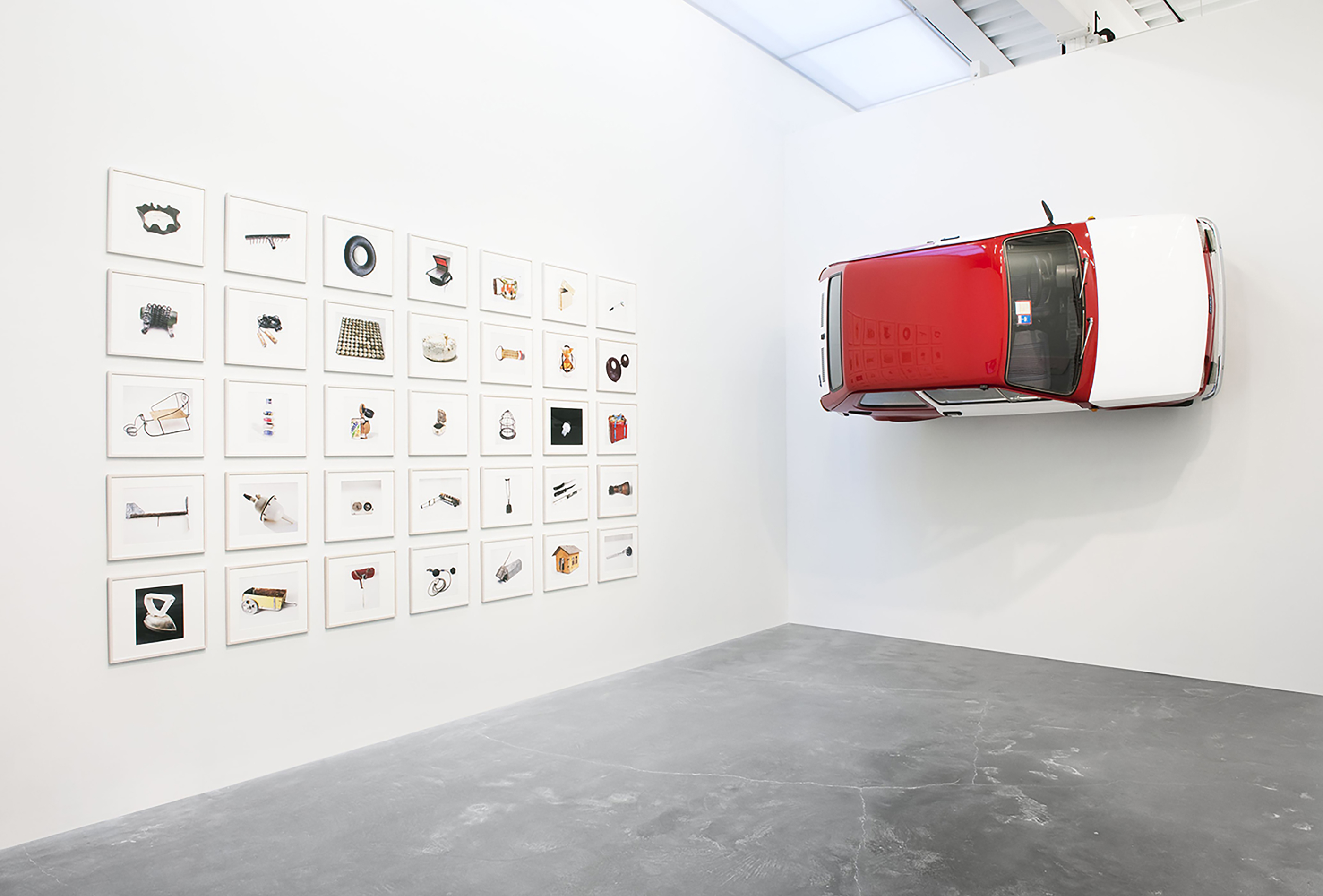Ostalgia
The New Museum and the

Contesting the format of a conventional geographical survey, the exhibition will include key works produced by Western European artists who have depicted the reality and the myth of the East. Ostalgia is curated by Massimiliano Gioni, Associate Director and Director of Exhibitions of the New Museum, occupying all major galleries.
The exhibition takes its title from the German word "ostalgie", a term that emerged in the 1990s to describe a sense of longing and nostalgia for the era before the collapse of the Communist Bloc. Thirty years ago, a process of dissolution began, leading to the break-up of the Soviet Union and the many other countries that had been united under socialist governments. From the Baltic republics to the Balkans, from Central Europe to Central Asia, entire continents and nations were reconfigured, their constitutions rewritten, borders redrawn. Ostalgia looks at the art produced in and about some of these countries, many of which did not even exist three decades ago. Mixing private confessions and collective traumas, the exhibition describes a psychological landscape in which individuals and entire societies try to negotiate new relationships to history, geography, and ideology.
The works in Ostalgia,from both the East and the West, describe the collapse of the Communist system while offering a series of personal reportages on aspects of life under Communism and in the new post-Soviet countries. In particular, the survey exposes the peculiar place that artists came to occupy in socialist countries, acting simultaneously as outcasts, visionaries, and witnesses. Ostalgia explores similar atmospheres and sensibilities across nations and histories: it is more about a state of mind than a specific place in time.

Some of the preoccupations that seem to unite the artists in Ostalgia are a romantic belief in the power of art as a transformative, almost curative agent; an obsession with language and particularly with its propagandistic use; the conception of a new aesthetic of the body in contrast to the heroic bodies of Socialist Realism; a fascination for the ruins of history as represented by monuments and architectural vestiges; and an understanding of the artwork as a form of sentimental documentary that mediates between cultural pressures and individual anxieties. By combining seminal figures from the 1970s and '80s, along with the work of young artists, Ostalgia does not follow a purely chronological perspective, establishing instead a series of dialogues between different generations and distant geographies. Exposing local avant-garde practices and discovering international affinities, Ostalgia composes an imaginary landscape, tracing the cartography of a dream that haunted the East, which is ultimately what Ostalgia is.
Participating artists
Viktor Alimpiev, Yevgeniy Antufiev, Vladimir Arkhipov (Russia), Said Atabekov (Kazakhstan), Vyaheslav Akhunov (Uzbekistan), Miroslav Balka (Poland), Nikolai Bakharev (Russia), Itina Botea, Geta Brătescu (Romania), Anatoliy Brusilovsky, Eric Bulatov (Russia), Andro Vekua (Georgia), Hermann Glöckner (Germany), Aneta Grzhezhikovska (Poland), Ion Grigoresku (Romania), Andris Grinbergs (Latvia), Tacita Dean (Great Britain), Sergey Zarva (Ukraine), Anna Zemankova (Czech Republic), Sanja Iveković (Croatia), Neil Cummings and Marysia Lewandowska (Great Britain, Poland), Jiří Kovanda (Czech Republic), Yevgeniy Kozlov (Russia, Germany), Július Koller (Slovakia), Phil Collins (Great Britain), Edward Krasińsky (Poland), Aleksandr Lobanov (Russia), Jonas Mekas (Lithuania), Boris Mikhailov, Andrei Monastyrski (Russia), Deimantas Narkevicius (Lithuania), Gamlet Ovsepian (Armenia), Paulina Orlowska (Poland), Roman Ondak (Slovakia), Anatoliy Osmolovsky, Pavel Pepperstein, Viktor Pivovarov, Dmitriy Prigov (Russia), Helya Paris (Poland, Germany), Anri Sala (Albania), Alina Sapozhnikov (Poland), Simon Starling (Great Britain), Mladen Stilinović (Croatia), David Ter-Oganyan (Russia), Jaan Toomik (Estonia), Werner Tübke (Germany), Andra Ursuta (Romania), Susan Philips (Great Britain), Stanislav Filko (Slovakia), Petrit Halilaj (Kosovo), Tibor Fejes (Hungary), Olga Chernysheva, Cho Delat? collective (Russia), Michael Schmidt, Thomas Schütte (Germany), The Workshop of the Film Form (Wojciech Bruszewski, Józef Robakowski, Ryszard Waśko) (Poland).
Lead producer — the
The New Museum is the only museum in New York City exclusively devoted to contemporary art. Founded in 1977, it was conceived as a centre for exhibitions, information, and documentation about living artists from around the world. From its beginnings as a one-room office on Hudson Street to the inauguration of its first freestanding, dedicated building on the Bowery designed by SANAA in 2007, the New Museum continues to be a place of ongoing experimentation and a hub of new art and new ideas.